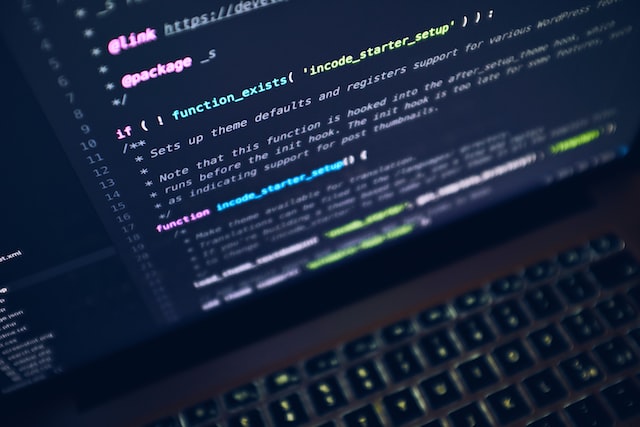
Comment Editor Eva Cahill discusses the threat that new AI generative technologies could pose for the arts
‘What did the ChatGPT say after changing the lightbulb in dark? Now that’s what I call illuminating!’ This piece of comedic genius was written by none other than ChatGPT, an artificial intelligence chatbot. Launched in November 2022 ChatGPT was developed by Open AI, an American non-profit artificial intelligence laboratory. From joke writing, to content creation to customer service, ChatGPT has, in its own words ‘taken the world by storm’ impressing users with its ability to generate human-like texts in response to almost any prompt.
Wanting to experience this for myself, I decided to put ChatGPT to the test. I tasked it with writing an opinion piece about the dangers of ChatGPT. Rather worryingly, the article it produced claimed that ‘the worst possible outcome of human employment of ChatGPT would be if it caused widespread unemployment and social upheaval, leading to societal collapse’. This dystopian picture was not quite the answer I was looking for on a drab Tuesday evening after a long day at the library. However, there have been increasing concerns about the impact of artificial intelligence (AI) on future employability.
Indeed, ChatGPT is only one of the generative AI tools released recently joining image generators such as Midjourney and DALL-E, and the video generator Synthesia. With the funding for the arts increasingly on the back burner, does the advancement of these new more efficient AI generative technologies spell the end for creative roles such as writers, illustrators, scriptwriters, and journalists?
“There have been increasing concerns about the impact of artificial intelligence (AI) on future employability
At its core, artificial intelligence aims to replicate or simulate human intelligence in machines. To do so, generative tools such as ChatGPT scour enormous databases, forming connections and observing patterns between different data points to come to conclusions. These creative AI’s work in a similar manner to your own brain, drawing connections between different sensory experiences and knowledge to come to conclusions that make up a creative piece. For example, when deciding an effective punchline for a joke, you draw from an understanding of the conventions of humour and combine it with your personal experience so that when you eventually deliver that dinner party zinger it would be a task not to laugh. Thankfully, as ChatGPT’s lightbulb joke illustrates, it seems that the likes of Ayoade and Acaster are far from under threat.
In addition, since these AI tools are drawing from existing data sets with inbuilt biases, artificial intelligence has been found to reproduce harmful biases in their outputs. A Guardian Investigation recently found that many AI algorithms have a clear gender bias. These AI tools are supposed to limit harmful, violent, or pornographic content. In doing so, the AI tagged many photos of women in everyday situations as sexually suggestive and rated more pictures of women as racy or sexually suggestive compared with pictures of men. It appears then that although impressive, many of the creative outputs of these generative tools fall victim to the biases ingrained in the data set that they are drawing from.
Thus, if we were to paint a picture of AI as a competing candidate in the arts sectors, we don’t have too much to be worried about. What does the image of a sexist, adult-child still coming to grips with the basic conventions of humour really have on, for example, some of the greatest scriptwriters of our day. Despite this, there is little doubt that with increasing investment and innovation, AI will resolve these teething issues: one day AI might be able to efficiently churn out creative content that could rival that of our present writers, artists, and comedians. Thankfully, in my opinion, all does not appear lost quite yet. If you have thrown your hard-earned Bachelor of Arts degree in the bin, now might be the time to retrieve it…
“Thankfully, in my opinion, all does not appear lost quite yet
Ultimately, there is a larger, more powerful point to be made here about why we value creative works. Indeed, the art sector is so uniquely valuable in part because of art’s ability to convey experience and outlooks. Scriptwriters, album cover designers, poets and comedians all convey their uniquely different perspectives of the world in their work. In turn, we digest and enjoy these creative outputs because they enrich us with a fresh, perspective of the world. The fundamental point that I am making should not be particularly controversial. We enjoy the arts, in part, because of what they tell us about how other people think and how they experience life. Indeed, Adichie’s ‘Americanah’ would have a fraction of the meaning without the book’s ability to convey Adicie’s own experiences living as an African American in the United States. Kusama’s infinity rooms would lose much of their effect without an understanding of how they represent her traumatic early childhood.
Whilst more efficient, AI generative tools such as chatbots and image generators will never truly be able to fulfil the function of conveying raw, individual experiences. No doubt, as limited funding applies increasing pressure on the UK’s art sectors purse strings, creative industries will start to look for efficiency alongside values such as individuality. However, as this approaches, an important choice must be made here: whether we accept these machine imitations of creativity in aid of efficiency, or whether we choose to value the arts and creativity in virtue of their ability to represent lived human experience across society.
Read more comment pieces here:
A Dysfunctional Government: Looking Ahead to 2023
Comments